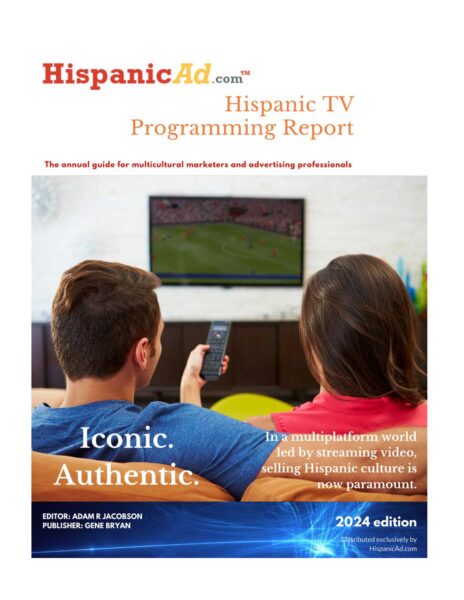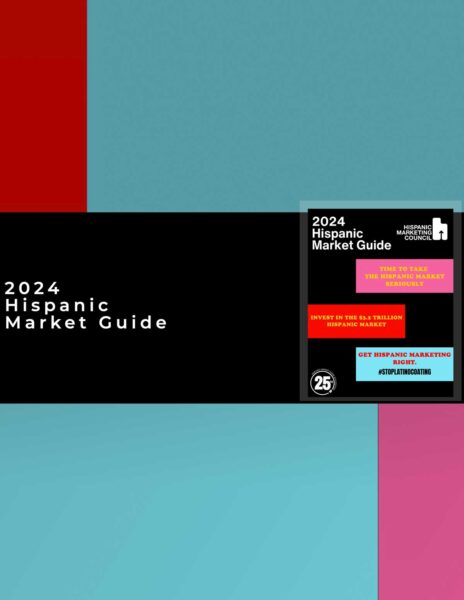Multi-ethnic models in advertising: universal appeal without alienation? [INSIGHT]
September 10, 2014
 By David Morse, CEO, New American Dimensions LLC
By David Morse, CEO, New American Dimensions LLC
Pizza Patrón gets burned by the Conservative Caucus for a promotion offering a free pizza to customers who order in Spanish.
In a Super Bowl ad, Coca Cola features a chorus of hyphenated Americans singing the national song in seven languages. The ad provokes a twitter fury with the hashtag #BoycottCoke.
General Mills sets off a firestorm of racist comments after it produced a brilliantly touching Cheerios spot featuring a biracial little girl, and her African American father and white mother.
![]() Is America truly ready for total marketing? Or is the formula just too simple, resting on a flawed narrative that a racial divide no longer exists?
Is America truly ready for total marketing? Or is the formula just too simple, resting on a flawed narrative that a racial divide no longer exists?
In an effort to answer this question, New American Dimensions, Research Now and Florida State University collaborated on a study to gauge the reaction of millennials to ads featuring models of different ethnicities. Participants were recruited from the panels maintained by Research Now, the world’s largest provider of digital data collection solutions. A total of 825 millennials (adults between the ages of 18 and 30) took part in the online study. The sample was comprised of 253 African Americans, 293 non-Hispanic Caucasians and 279 people of Hispanic origin. (The study was fielded only in English, as acculturated Hispanics were the main target of interest.)
Each participant was shown just one print ad for a fictional brand of pen, featuring three individual models. Four versions of the ad were created; all identical in copy and layout, except for the ethnicities of the models: Version 1 featured three Caucasian models, Version 2 featured three African American models, Version 3 featured three Hispanic models, and Version 4 featured one model from each ethnic group. In addition to visual cues, the ethnic identity of the model was reinforced through the use of name captions (e.g., the Hispanic models were identified as Mateo Torres, Mia Garza and Lucas Herrera).
Participants were asked to evaluate the ad they saw in terms of overall attitude toward the ad, and changes in interest in the brand. The “felt targetedness” of the ad – a measure of identification to gauge whether participants felt that the ad was “for someone like me” – was also measured.
Findings from the study showed that model ethnicity does indeed influence felt targetedness, with participants of a particular ethnic group feeling most targeted by ads featuring models from their own group. In terms of overall evaluation of the ad, African Americans tended to evaluate ads featuring African American models more favorably than ads solely featuring other ethnic groups. That said, the pattern was not quite so clear for Hispanic and Caucasian participants.
Furthermore, participants from all three ethnic groups rated the ad with mixed-ethnicity models very favorably. This finding suggests that advertisers can target multi-cultural audiences with ads featuring multi-ethnic models, without being unduly concerned about alienating any single group. It is important to note that these results could be different for other types of products that have much stronger cultural connotations than a pen.
So, is caution advised when using multi-ethnic models in advertising? Perhaps there are clues in the current state of integration (or lack thereof) in the nation.
According to a recent analysis by John R. Logan and Brian J. Stults, the US remains a segregated country. The typical Caucasian American lives in a neighborhood that is 75% Caucasian. The typical African American and Hispanic lives in a neighborhood that is only 35% Caucasian. In other words, we tend to live near those like us.
When looking at socio-economic disparities, the difference between Caucasians and minorities is striking. According to the Center for American Progress, at the end of 2010, 16% of African Americans and 13% of Hispanics were unemployed compared to only 9% of Caucasians. Three-quarters of Caucasians own homes, compared to just 45% and 47% for African Americans and Hispanics. Such figures ignore the fact that most wealth is inherited; African Americans are estimated to have one-eighth of the net worth of Caucasians.
Research shows that when it comes to perceptions of racial progress, African Americans and Caucasians are on a completely different page. In a 2009 study by Lawrence D. Bobo and Alicia Simons, 61% of Caucasians felt that African Americans have already achieved equality. Not surprisingly, only 17% of African Americans agreed.
Although the days of Jim Crow segregation are long gone, many sociologists have argued that in its place has emerged a more subtle type of racism, what Eduardo Bonilla-Silva calls “color-blind racism.” Research at New American Dimensions confirms this. Caucasians tend to say that they don’t see color. But if you probe more deeply, race and color seem to be a national obsession.
Marketers have the job of capturing the zeitgeist of consumers, and translating that into compelling advertising campaigns that ultimately sell more products. Yet too many marketers ignore the complexities of race in America. All too often, they get things woefully wrong.
Groupthink dies hard, even among marketers who supposedly have their finger on the pulse of things. But America is a complicated place. Diversity should not be about assuming homogeneity, but rather, recognizing and acknowledging differences. It begins with respect for difference and respect for one’s right to see the world in one’s own unique way.
Note: In addition to David Morse, the other principal investigators in the study were Kartik Pashupati, Ph.D. (Research Director, Research Now), and Andy Ellis (Ph.D. candidate in the Department of Communication, Florida State University)
































